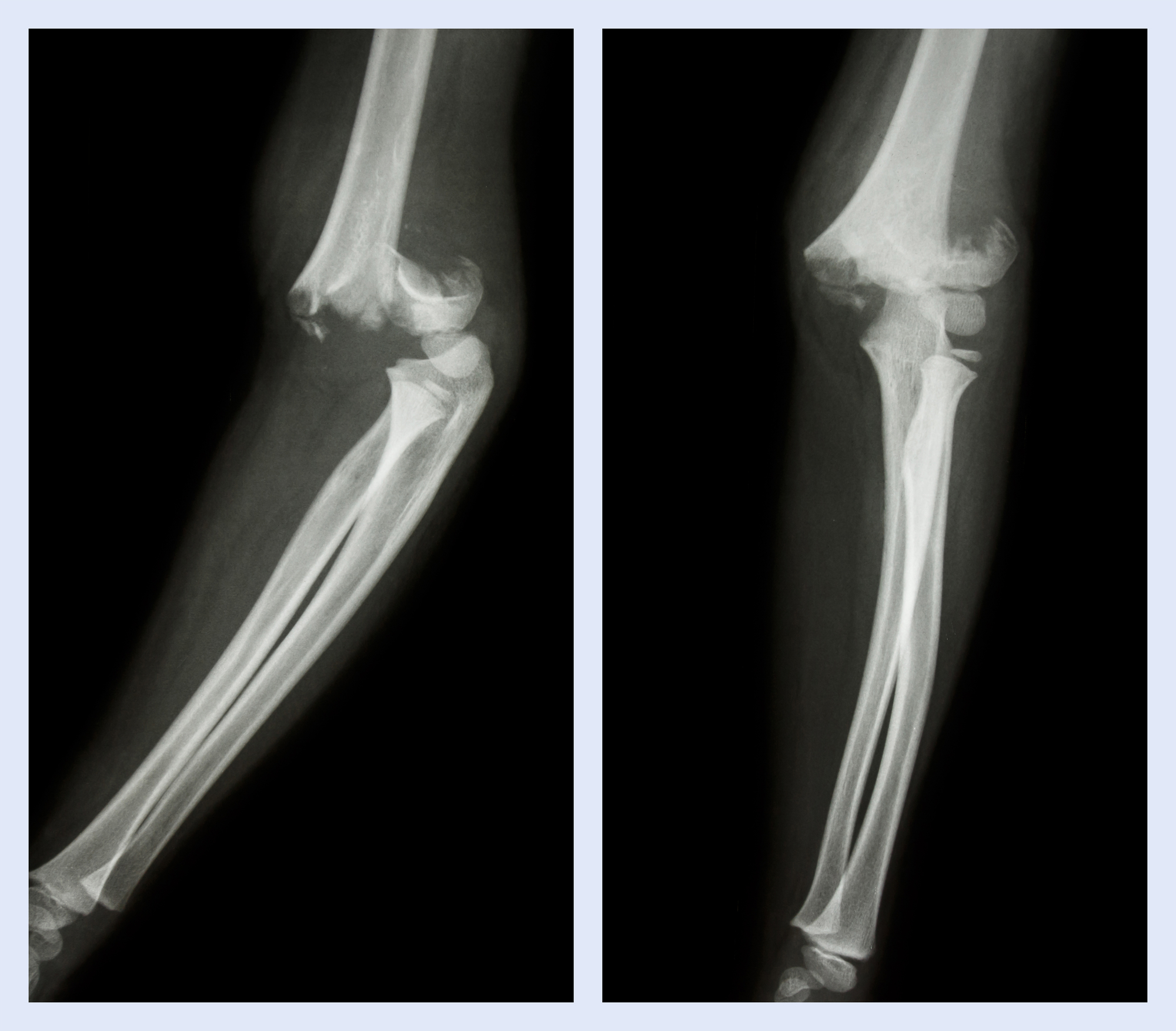There are many types of fractures that can occur to the shoulder or elbow, all of which differ in terms of severity, treatment, and recovery. Lots of fractures occur in older patients who have osteoporosis, but patients of any age can suffer a fracture in the right circumstances.
Orthopaedic surgeons classify fractures based on the number of parts fractured, the direction of displacement, whether or not there is an associated open skin injury, whether or not the fracture line extends into the joint itself, and more. Shoulder and elbow fractures can be evaluated through x-rays and sometimes a CT scan, if needed.
For a typical patient, it’s not important to understand the classification systems, but they help physicians be able to better discuss the injury with other doctors and the other members of your care team. It also helps with providing diagnostic and treatment-related information, as not all fractures are created equal.
In general, treatment of fractures depends on bone quality overall, how well the bone is expected to heal, and potential future repercussions of that injury, such as risk of future arthritis when a fracture goes into a joint and makes the joint incongruent. Many fractures heal on their own with immobilization, while others can be repaired through surgical use of plates and screws, pins, or wires. In some cases, replacement of a portion of the joint or the entire joint may be required.
Fractures of the elbow
Distal humerus fractures most often occur from a fall from standing or a slight elevation, such as a step or two. This often occurs in patients with osteoporosis and results in lots of fragments. Treatment usually requires surgery and the use of pre-contoured plates attached with screws that hold the fragments in correct alignment in order to allow the arm to heal in correct alignment. This is especially helpful in allowing motion earlier to avoid stiffness in the elbow.
Radial head fractures are common and often occur when falling, such as off a bike, onto an outstretched hand. If the injury results in only two fragments and minimal displacement, treatment is to immobilize the elbow in a sling for a week or two and then start early physical therapy. If there are more fragments or greater displacement, surgery to repair the fracture with screws or a radial head replacement (different than a total elbow replacement) may be required.
Olecranon fracture occurs in the bony tip of the elbow and typically needs to be repaired with screws, pins, or wires. Because the triceps attaches to the point of the elbow, it can create a gap that doesn’t allow new bone to form, thus the need for surgical treatment.
Coronoid fracture can occur alone or in combination with elbow dislocation and/or ligament injury. A simple tip of the coronoid fracture may not require treatment beyond temporary immobilization, but more complex coronoid injuries that include ligament injury will likely require surgery. The terrible triad of the elbow is a coronoid fracture combined with radial head fracture and dislocation.
Fractures of the shoulder
Proximal humerus fracture is a fracture of the upper part of the arm bone, the third most common joint fracture after wrist and hip. Most can be treated non-operatively, although it depends on the fracture pattern.
Scapula fractures can occur in the blade part of the shoulder. Most are non-operative, but some may require surgery if they extend into the socket part of the shoulder joint or if they cause instability of the shoulder. Scapular fractures are not common and require a significant amount of trauma to occur, such as a motorcycle accident.
Glenoid fractures (the socket part of the shoulder joint) can cause the joint to be uneven, can lead to arthritis, and can cause the ball to fall out of the socket. Surgical treatment is generally recommended if they are displaced to prevent long-term consequences.
Clavicle fractures are relatively common and treatment depends on age, activity demands, and how displaced they are. The clavicle remodels well even up to the early 20s, and many heal on their own in older patients as well. For patients who do manual labor or lots of overhead work, repairing the clavicle surgically may be recommended.
A type of fracture that occurs between the shoulder and elbow is a humerus fracture, which is the shaft part of the arm. It can be associated with radial nerve injury, especially if the fracture occurs in a spiral pattern at the groove where the nerve is normally located and traps the nerve. Most humerus fractures only require a sling and physical therapy.
If you experience pain in your shoulder or elbow that may be the result of a fracture, contact the Oklahoma Shoulder Center today to schedule an appointment.
By Oklahoma Shoulder Center PLLC
October 30, 2017

Blog Posts

